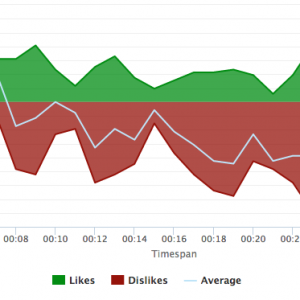Market Research vs. Marketing Research
Have you ever questioned whether market research and marketing research are the same thing? The distinction between market research and marketing research is often a point of contention to many. So what is the difference between market research and marketing research, and how do they differ? Even though these two names are frequently used interchangeably, they have specific distinguishing characteristics.
To grasp the distinction between market research and marketing research, you must first comprehend the marketing mix, often known as the Four Ps of Marketing, which consists of the following: product (goods or service), price (how much the customer pays), place (where the product is marketed), and promotion (advertising and PR). These are the four most important aspects of marketing goods or services. For those goods or services to succeed in the marketplace, they must all work well together.
In this article, we are going to dive deeper into marketing and market research and the process each one has. We are also going to talk about the similarities and differences between these two forms of studies.
What is market research?
Market research is the study of a target market and the collection of data about that market and the people who live in it. It simply addresses one of the four Ps of marketing: place. In this situation, place refers to a certain market or segment.
What is marketing research?
Marketing research encompasses a considerably broader range of activities. It covers the four Ps of marketing, as well as Place. Marketing research covers the invention, development, placement, and growth of a product or service and its expanding audience and branding – from brand awareness to brand equity.
Market and marketing research process:
Although the two studies have their differences in terms of their scope in the four P’s of marketing, they use a similar process when conducting the research.
1. Problem Definition
The first step in this process is to define the problem of the research. This is done while considering the study’s goal, important background information, what data is required, and how it will be used in decision-making. Discussions with decision-makers, interviews with industry experts, secondary data analysis, and qualitative research are all part of this step.
2. Development of an Approach to the Problem
Formulating an objective or theoretical framework, analytical models, research questions, hypotheses, and identifying features or factors that can influence the research design are part of the second step. Discussions with management and industry experts, case studies and simulations, secondary data analysis, qualitative research, and pragmatic considerations steer this process.
3. Research Design Formulation
A research design is a blueprint or framework for performing marketing research. Its objective is to construct a study that will test the hypotheses of interest, discover possible answers to the research questions, and offer the information required for decision making.
The research design includes the study’s objectives to assure that the data obtained is relevant to the goals. The researcher should also determine the kinds of information sources required, the data collection method (e.g., survey or interview), sampling, methodology, and the research’s timing and potential expenditures at this point.
4. Field Work or Data Collection
Fieldwork entails using a field force or staff that operates in the field or via the mail. The field force should be selected appropriately, trained, supervised, and evaluated to reduce data gathering errors. For example, when a consumer products company hires a market research firm to conduct in-store shop-along to collect primary research, this is an example of data collecting.
5. Data Preparation and Analysis
The process of reviewing, cleaning, manipulating, and modeling data to highlight relevant information, draw conclusions, and assist decision-making is known as data analysis. Data analysis includes several dimensions and approaches, including a wide range of methodologies in various businesses.
6. Report Preparation & Presentation
The entire study should be documented in a written report that addresses the specific research questions identified, defines the strategy, study design, data collection, and data analysis processes used, and summarizes the outcomes and critical conclusions. In addition, the findings should be provided in an easily understandable manner so that they can be used to make decisions quickly.
The Differences
Although market research informs marketing research, it differs in different aspects. The former entails an examination of the market and the buyer’s behavior within it. On the other hand, the latter involves a thorough analysis of all facets of a company’s marketing. Additionally, the scope of market research is limited to the behavior of the market and the consumer. In contrast, marketing research goes to the entire marketing process – the Four Ps and the market itself.
Another difference between the two is their nature of research. Market research provides information about a specific market and cannot be applied to other areas. Meanwhile, marketing research can be utilized to address a variety of marketing concerns and concerns. The former is also dependent on the marketing research requirements. Marketing research, on the other hand, is created by a company for a company.
The Similarities
Market and marketing research share a number of similarities. The most important similarity that they possess is that they are both crucial for a business to attain success. Both studies are also helpful for quantitative and qualitative tools and techniques such as surveys, focus groups, questionnaires, and interviews to gather information.
Moreover, they are helpful in making judgments about the type and quality of products and services given to clients, appropriate business sites, the most effective advertising, and the most efficient distribution methods and networks.
Final Thoughts
Market research and marketing research can take many different shapes, but they all have one thing in common: systematic inquiry. As a systematic inquiry, it necessitates meticulous planning of the orderly investigative procedure. Therefore, even though they are frequently used interchangeably, it is critical to understand their differences.
While it is unnecessary for all research methods to follow a particular order, market and marketing research frequently follows a generalized pattern that may be broken down and evaluated in stages.








